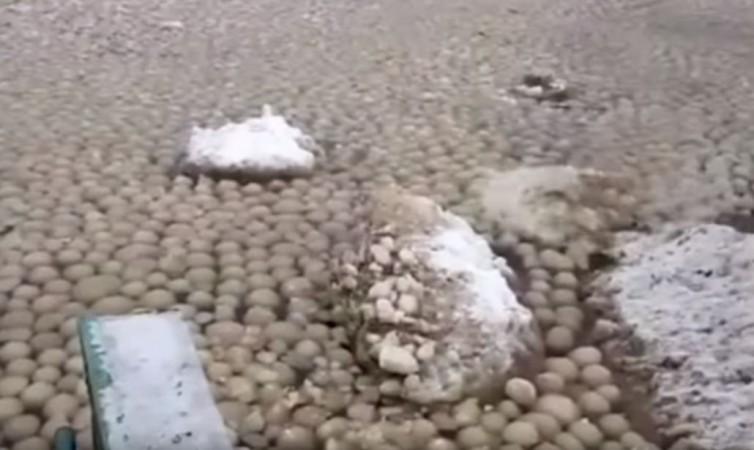
Thousands of giant and uniformly sized ice balls that washed up on the Russian coast in the Gulf of Finland have baffled researchers. The perfectly formed ice balls have not only puzzled researchers but even social media users are baffled.
The ice balls, with a diameter of up to 17 cm, looking like giant eggs were discovered in the Gulf of Finland this week. Social media users shared the photos of the ice balls and even joked about the mystery of the balls washing up on the shore.
While some claimed that the snowballs were thrown into the gulf, several others believed that the ice was shaped together because of the waves. Some even suggested that stones covered in ice could have washed up.
However, ecologist Ilya Leukhin told local media that this odd phenomenon could have been caused due to oil spills in the water.
Another explanation for the formation of the uniformly sized ice balls was given by Gennady Grakhovsky, an assistant professor at St. Petersburg's Russian State Hydrometeorological University. Grakhovsky told Russia's Channel 5 that ice balls form when "freezing sea water meets rough sea conditions."
"As it freezes, seawater passes through three phases," Grakhovsky explained. "The first is called slush, a fine-granular ice floating on the surface of the water. If the sea is calm, the slush turns into a continuous sheet of ice. If there are waves, it is crushed into so-called pancake ice. If the waves are strong, the slush forms clumps, and what results are these ice ball-like formations."
While the ecologist and the professor tried to offer plausible explanations as to why this phenomenon happened, others had some vague explanation.
"This is whale caviar. Do not listen to anyone and look for a dead whale nearby. Those usually die right after sweeping away the eggs," one social media user said.
Meanwhile, a similar incident happened in 2014 when ice balls washed up on the shores of Lake Michigan.

















